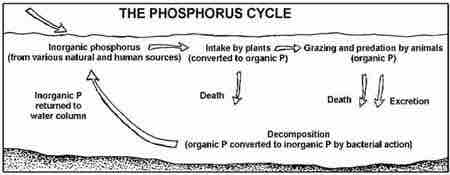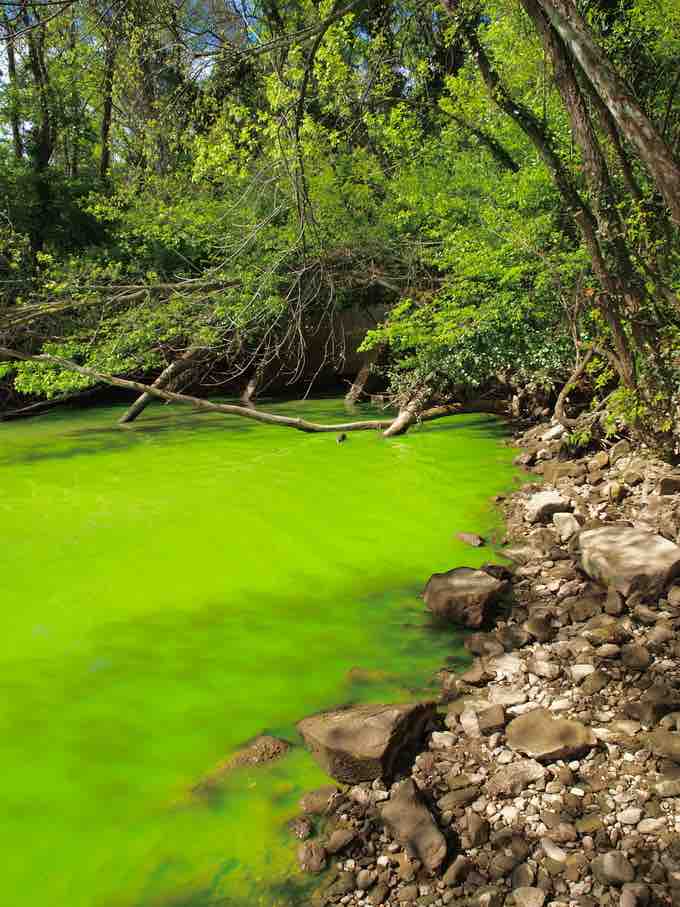Phosphorus is an important element for living things because it is neccesary for nucleotides and ATP. Plants assimilate phosphorous from the environment and then convert it from inorganic phosphorous to organic phosphorous. Phosphorous can be transfered to other organisms when they consume the plants and algae. Animals either release phosphorous through urination or defecation, when they die and are broken down by bacteria. The organic phosphorous is released and converted back into inorganic phosphorous through decomposition. The phosphorous cycle differs from other nutrient cycles, because it never passes through a gaseous phase like the nitrogen or carbon cycles .

The aquatic phosphorous cycle
Phosphorous is converted between its organic and inorganic forms. Plants convert phosphorous to its organic form, and bacteria convert it back to the inorganic form through decomposition
Phosphorous levels follow a seasonal pattern in aquatic ecosystems. In the spring, inorganic phosphorous is released from the sediment by convection currents in the warming water. When phosphorous levels are high, algae and plants reproduce rapidly. Much of the phosphorous is then converted to organic phosphorous, and primary productivity then declines. Later in the summer, the plants and algae begin to die off, and bacteria decompose them, and inorganic phosphorus is released back into the ecosystem. As phosphorous levels begin to increase at the end of the summer, primary plants and algae begin to rapidly grow again.
The phosphorous cycle is affected by human activities. Although phosphorous is normally a limiting nutrient, most agricultural fertilizers contain phosphorous. Run-off and drainage from farms can flood aquatic ecosystems with excess phosphorus. Artificial phosphorous can cause over growth of algae and plants in aquatic ecosytems. When the excess plant material is broken down, the decomposing bacteria can use up all the oxygen in the water causing dead zones. Most bodies of water gradually become more productive over time through the slow, natural accumulation of nutrients in a process called eutrophication. However, overgrowth of algae due to phosphorous fertilizer is called "cultural eutrophication" or "hypertrophication," and is generally negative for ecosystems .

Hypertrophication on the Potomac River
The bright green color of the water is the result of algae blooms in response to the addition of phosphorous based fertilizers.